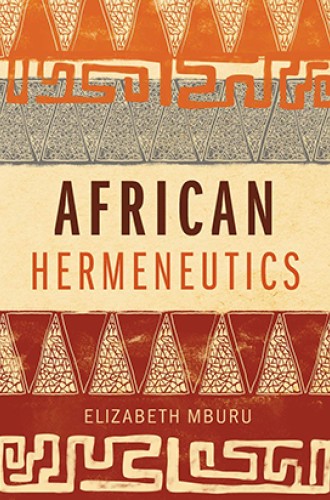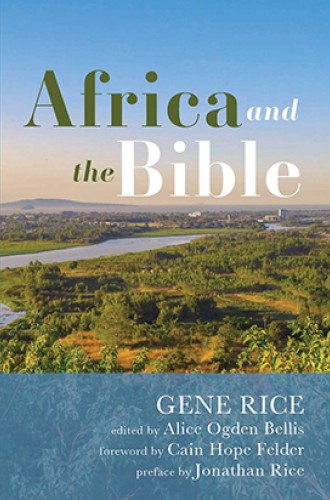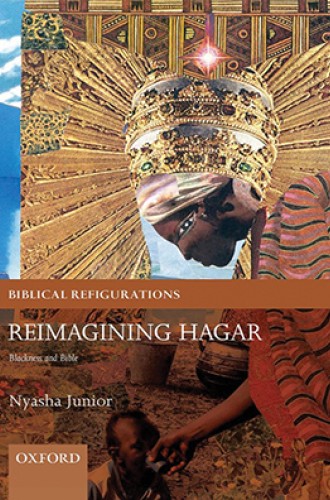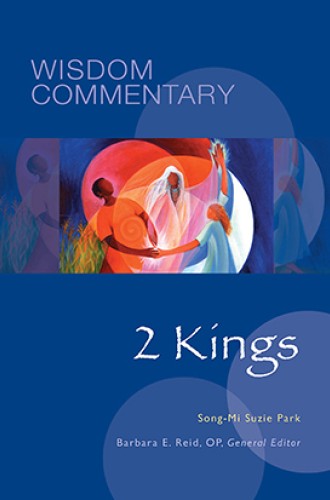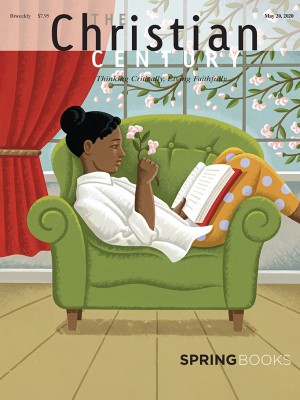The way we translate and interpret the Bible is always shaped by both textual and contextual factors. The rise of cultural hermeneutics within the field of biblical studies has challenged scholars to acknowledge and interrogate the cultural contexts of the texts, their interpreters, and their readers and to place these multiple contexts in conversation.
My social location as an African American Christian woman is always with me—sitting down beside me, reading over my shoulder—when I open the Bible. I usually come to the text with two questions: Where are the women, and where is Africa? I pose similar questions to biblical scholarship: Where are the voices of women biblical scholars and of African biblical scholars? Four of these voices stand out among recent publications in the field.
Read our latest issue or browse back issues.
African biblical exegesis almost always aims to be accessible and useful to contemporary readers. In African Hermeneutics (Langham Global Library), Elizabeth Mburu observes that African readers of the Bible “face the additional challenge that most of the models and methods of bible interpretation, or hermeneutics, are rooted in a Western context.” She attributes this to the importation of modern Christianity to the African continent through Western missionaries. African Hermeneutics is Mburu’s attempt to fill this void by offering a “contextualized, African intercultural approach” to studying the Bible.
Using the model of a four-legged stool, Mburu suggests that an African hermeneutic must contain the following elements:
- parallels to the African context
- understanding of the theological emphasis of the text
- identification of the literary features of the passage
- consideration of the historical and cultural context of the passage
After these pillars are established, the stool’s seat—practical application—must be built. Mburu helps readers with this interpretive task by offering African-centered practical applications. She recommends the integration of stories, songs, letters, and folk wisdom, deploying these as cultural tethers to an African context.
African Hermeneutics is a welcome text that decentralizes Western ways of reading and interpreting scripture, both in the academy and in the lives of everyday Christian readers.
Along those lines, my own exegetical approach seeks to recenter Africa, African peoples, and Africanisms in the study of the Bible. One invaluable resource I’ve found is Gene Rice’s Africa and the Bible (Cascade Books), a volume of the late Rice’s writings edited by Alice Ogden Bellis. The essays, which span his nearly 50-year tenure at Howard University School of Divinity, illuminate both the African presence in the Bible and the influence of Africa on the Bible.
Rice’s work leverages historical-critical and sociocultural methods to identify Africa and Africans in the Bible, correct myths and errors about African characters, and combat oppression backed by the weaponization of scripture. He devotes two chapters to the curse of Ham (Gen. 9:18–27), which Rice aptly describes as “the most misunderstood and abused passage of the Bible.” Southern slave owners frequently cited Noah’s curse upon Ham’s son Canaan (verse 25) as justification for their ideology.
In debunking this myth, Rice provides a comprehensive retrospective on the historical arguments supporting and refuting the curse, and he charges biblical scholars with offering non-racist interpretations of this passage. Rice concludes that since “the biblical text explicitly identifies Canaan—and only Canaan—as the one cursed, one may reasonably infer that the other sons of Ham, Kush (Ethiopia), Egypt, and Put (Libya), who are African peoples properly speaking, were not cursed.”
Rice also provides a fascinating excursus on the possible African origins of the worship of YHWH. He was not the first to argue the Kenite hypothesis, the theory that the Israelites adopted the worship of YHWH from the Kenites, a clan of the Midianites. But Rice focuses on the African identity of the Kenites, suggesting that the Israelites adopted the worship of YHWH from an African clan. He suggests that the Kenites might have been an African priestly clan of YHWH worshippers. Based on this expanded hypothesis, Moses’ wife Zipporah was not only a ritualist, she was an African woman ritualist.
When thinking about African women in the Bible, many modern readers’ thoughts turn to Hagar, the Egyptian slave of Sarah and Abraham whose story is recounted in Genesis 16 and 21. In Reimagining Hagar (Oxford University Press), Nyasha Junior surveys the history of interpretation of Hagar’s narrative in order to understand the process by which she began to be depicted as a black woman. As she goes about “determining how and why Black Hagar emerged,” Junior pays special attention to the reception history of Hagar in African American biblical interpretation.
Junior analyzes depictions of Hagar in a variety of contexts, including art, music, culture, and biblical scholarship, in order to untangle the biblical character from depictions in fiction, theological deployments, and popular tropes. This approach enables the book to appeal to a broader audience than would typically engage biblical scholarship while simultaneously inviting biblical scholars to consider an expansive, multidisciplinary company of interlocutors. It also enables astute biblical scholars to consider the impacts of longitudinal shifts in reader contexts on biblical interpretation. Junior’s methodological approach illustrates that what happens in the world of the reader influences how a text is read.
Building on the work of African American biblical scholars like Randall Bailey and Cain Hope Felder, Reimagining Hagar identifies the stride toward valuing the presence and contributions of African-descended people as the nexus between Hagar as African and Hagar as black. “Even if the author’s intent was not to racialize the character,” Junior argues, “for some readers, to mark a character as African would serve to connect that character with the history and heritage of persons of African descent in the US, who are generally identified as black.” She does not advocate for any particular depiction of Hagar’s race or ethnicity but instead brings a swath of existing interpretations to the table to construct a multidimensional characterization.
Junior credits feminist and womanist scholars with concretizing the image of Hagar as a black woman—not just a black person—by identifying her with the concerns of contemporary African American women. She regards Phyllis Trible, Renita Weems, and Delores Williams as most influential in this regard, noting that Williams created “an influential cultural history of Hagar that contributes to understandings of biblical Hagar as a black woman when she fuses Aunt Hagar and biblical Hagar into one cultural tradition.” Reimagining Hagar cautions against an uncritical fusion of the biblical Hagar with these other portrayals but acknowledges that the understanding of biblical Hagar as a black woman provides a useful entry point into the Bible’s stories for modern black women.
Feminist and womanist scholars have for quite some time been forerunners in creating entry points for everyday readers to engage biblical texts. The Woman’s Bible, published in the late 19th century, was the first commentary written solely by and for women. Song-Mi Park’s 2 Kings (Liturgical Press) reflects the current state of feminist biblical scholarship: sophisticated and rigorous, infusing trained exegesis with clergy and lay voices (and in some cases adding feminist activists to the mix). This is the 12th volume in Wisdom Commentary, an interpretive series that prioritizes gender while “also addressing the intersecting issues of power, authority, ethnicity, race, class, and religious belief and practice.”
Like traditional feminist biblical commentary, Park attends to the many women characters, named and unnamed, that appear in 2 Kings. Both Queen Athaliah (chapter 11) and the prophet Huldah (22:1–23:37) receive extended treatment, serving as the foci rather than the bylines of the pericopes in which they appear. Where the biblical text presents incomplete or conflicting information about women’s identities or downplays their role in ancient Israel’s story, Park does not attempt to reconcile the text or correct any missteps. Instead, she exposes the ways that both the text and modern biblical scholarship have handled the women of 2 Kings. She problematizes the othering of women and other groups of people and endeavors to “shine a light on some of the androcentric messages, views, and visions that emerge in 2 Kings so as to explore their meaning and significance.”
Park addresses one group in particular that has received little attention in comparable commentaries: widows. In 2 Kings 4:1–7, Elisha is approached by a widow seeking resources for the survival of her family. Park invites readers to shift their focus from the prophet’s strategy to meet the widow’s need and instead to sit with the widow for a moment and consider the intersecting issues that led to her poverty. This text, Park contends, “gives the reader a small glimpse into the hidden family life of the prophets” and “forces the reader to reconsider the difficult lives of the women and children who exist in the shadow of these (largely) male prophetic figures.”
Park illuminates the condition of the women, children, and servants whose family structures are abruptly disrupted by the mass slaying of prophets on Mount Carmel. What the narrator presents as a victory for Elijah is also a tragedy for the families of the murdered prophets. Spouses and children are abandoned. Household incomes are reduced and in some cases depleted. Park interprets this text as an illustration of the socioeconomic vulnerability of women and children and as an indictment against the monarchy. This consideration of widows is one of the many contributions that make 2 Kings a significant addition to the field of biblical studies.
I hope that academic and lay readers, as well as clergy, will find recent publications useful for reading the Old Testament the same way that it was compiled: in multilayered communities from multiple vantage points.


